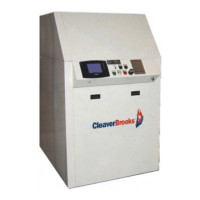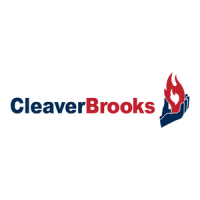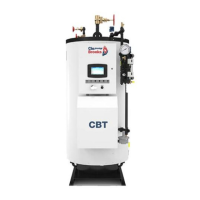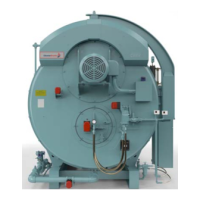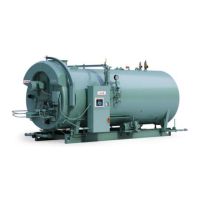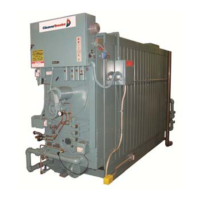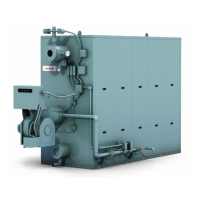CB FALCON
750-265 20
GENERAL CONFIGURATION SETTINGS
Those that alter the behavior or availability of configurable
items that are not in any other category. Those that are not
defined in other sections are listed in Table 8:
Warm Weather Shutdown
Setpoint
Temperature, None
Lead Lag slave enable Enable, Disable (hydronic only)
Lead Lag Master enable Enable, Disable (hydronic only)
DHW priority vs LL
DHW priority vs CH
These parameters determine the priority of DHW versus other sources of calls-for-heat, when more
than one source is enabled. The LL source has a fixed priority versus the CH source: if an Falcon is
set up as a LL slave, and a LL master is controlling it, then the CH source is ignored.
DHW priority override time mm:ss
This parameter determines whether a DHW demand can temporarily override the priority defined by
the DHW priority parameters. If it is non zero, then a DHW demand will take priority over both the LL
demand and the CH demand, for the specified time. If the DHW demand persists for longer than the
specified time then this override priority will expire and control will revert to the normal priority. The
override timer is reset when demand from the DHW source turns off. If normal DHW priority is
already higher than the one or both of the competing priorities, then this parameter has no effect
versus the competing priority.
Annunciation enable
(Model Specific)
Enable, Disable
This parameter determines whether the Annunciator feature of the Falcon are active. When
disabled, the Falcon will ignore the Annunciator inputs.
It may be disabled to turn it off temporarily, but more typically this will be turned off because the
application does not use this feature.
Burner Switch On, Off
This parameter enables or disables the burner control. When it is off, the burner will not fire.
Inlet Connector Type For Falcon Hydronic Control
10K NTC single non-safety
12K NTC single non-safety
UNCONFIGURED
For Steam Control
15 PSI, 150 PSI, or UNCONFIGURED
Designates the type of analog sensor on connector J8 terminals 4 and 5.
Outlet Connector Type For Falcon Hydronic Control and Steam Control
10K NTC dual safety-connector J8 terminals 8, 9, and 10
10K or 12K NTC single non-safety-connector J8 terminals 8 and 9
Designates the type of analog sensor used. NOTE: the 10K NTC is a dual sensor used for safety
limits and requires safety verification during setup.
DHW Connector Type For Falcon Hydronic Control and Steam Control
10K NTC dual safety-connector J9 terminals 1, 2, and 3
10K or 12K NTC single non-safety-connector J9 terminals 1 and 2
Designates the type of analog sensor type used. NOTE: the 10K NTC is a dual sensor used for
safety limits and requires safety verification during setup.
Stack Connector Type For Falcon Hydronic Control and Steam Control
10K NTC dual safety-connector J9 terminals 4, 5 and 6
10K or 12K NTC single non-safety-connector J9 terminals 4 and 5
Designates the type of analog sensor type used. NOTE: the 10K NTC is a dual sensor used for
safety limits and requires safety verification during setup.
Outdoor Connector Type For Falcon Hydronic Control
10K NTC single non-safety
12K NTC single non-safety
For Steam Control - there is not an Outdoor Sensor Feature.
Designates the type of analog sensor type is on connector J8 terminals 11 and 12.
DHW Priority Time ODR
Enable
Disable, Enable
When enabled, the DHW priority override time parameter will be derated when the outdoor
temperature is below 32°F. When the outdoor temperature is 32°F and above, the programmed time
will be used as-is.
When the outdoor temperature is -40°F and below, the programmed override time will be derated to
zero (no override). Between 32°F and -40°F, a linear interpolation will be used. For example, at the
midway point of -4°F, the DHW priority override time is one half of the value provided by the
parameter.
Table 6. System Operation Settings. (Continued)
Parameter Comment

